HIGHER EDUCATION INSTITUTIONS
Advance Research at Your Higher Education Institution.
Sponsor Foreign STEM Researchers at Your Institution
The STEM Research Initiative provides U.S. Higher Education Institutions with a reliable tool for sponsoring or hosting global experts in STEM fields.
With a goal of facilitating meaningful collaboration between academia and industry, this initiative enables foreign researchers to remain in the U.S. for up to five years—allowing them to advance research efforts at your institution, work in STEM fields at U.S.-based companies, and contribute to a stronger American innovation ecosystem. Whether you’re a university, college, or nonprofit, this initiative offers an exciting opportunity for driving innovation forward—on campus, in your local community, and across the nation.
Overview of STEM Research Initiative
STEM Research Initiative
From colleges and universities to nonprofit organizations, the STEM Research Initiative offers an easier way for American Higher Education Institutions to source, sponsor, and host talented foreign nationals involved in research and development from around the globe. Non-immigrant research scholars can legally remain in the U.S. for up to five years, staying at one institution for the entire duration or transferring their J-1 visa between multiple Higher Education Institutions, non-profit organizations, and U.S.-based companies.

Is My Institution or Eligible to Sponsor or Host Foreign STEM Researchers?
For the purposes of this initiative, eligibility is determined more by job function than specific job titles. For this reason, U.S.-based companies without official STEM classification can still qualify to participate in the program, as long as researchers’ roles fall into certain categories. Generally, positions in research and development, applied research, applied science, research roles that help generate new products or services, and similar will qualify.
Who Can Be Sponsored or Hosted Through the STEM Research Initiative?
This initiative is designed for non-immigrant foreign researchers and global experts in their respective fields, especially those interested in conducting STEM research, collaborating and exchanging ideas with their American peers, and advancing their professional prospects and network in the United States. While many participants hold master’s degrees or PhDs, foreign nationals with demonstrated expertise and a minimum of a bachelor’s degree are eligible to participate, including:
- Current J-1 Research Scholars
- Foreign nationals – R&D Experts
- F-1 Graduates
- Former Research Interns & Trainees
- Foreign employees/New hires in R&D
- Non-U.S. PhD Fellows
What Roles Can Researchers Be Sponsored or Hired For?
For the purposes of this initiative, eligibility is determined more by job function than specific job titles. For this reason, businesses without official STEM classification can still qualify to participate in the program, as long as researchers’ roles fall into certain categories. Generally, positions in research and development, applied research, applied science, research roles that help generate new products or services, and similar will qualify.
For more detailed information, review our FAQs.
How it Works

STEM Expert
U.S.-Based companies
Attorneys
Sponsor
HOSTING A RESEARCHER
SPONSORING A RESEARCHER
Hosting a Researcher
Participation Guide: How to Get Started
1 | Find a Research Candidate
In most instances, your current scholars, faculty, university partners, and/or team members will have suggestions on which global experts they want to bring on board. They are likely very familiar with other experts in their field of research through publications, research conferences, and other events. Occasionally, a foreign researcher may reach out to your institution or organization directly to express their interest. In addition, a matching platform is currently being built to match foreign researchers to relevant STEM research opportunities in the U.S. Once launched, this platform can help your institution or organization find qualified candidates directly.
2 | Reach out to one of our Sponsoring Organizations
Find a sponsor to work with on the application process and throughout the course of your researchers’ stay in the U.S. You can find a list of potential sponsors here.
3 | Prepare Paperwork & Apply for Visa
The sponsoring organization will work with you on what paperwork and documentation you’ll need to apply for the J-1 STEM Research Visa initiative.
4 | Map Out Logistics
- What is their timeline for bringing a foreign researcher(s) over to the U.S.? Do they have a desired start date in mind?
- What is their purpose for bringing over a foreign researcher? What will the researcher’s work be focused on?
- How will the researcher collaborate with their internal teams? Who will supervise their efforts?
- How will they compensate the foreign researcher: an hourly wage, bi-monthly salary, a stipend? How much can their organization afford to pay?
- What are their desired goals and outcomes for hosting a foreign researcher? What by what date?
- How will they measure progress?
5 | Ensure a Successful Start
Make a plan for pre- and post- arrival. Consider the following:
- What will the orientation process look like for your foreign STEM researcher?
- What will ensure a successful onboarding?
- Schedule a meeting to introduce your researcher to the rest of the team.
- Prepare a list of expectations and goals for the research engagement and ensure these are communicated clearly to your research.
6 | Collaborate with Sponsors on Ongoing Administration
Facilitate transfers to other academic Higher Education Institutions or employers.
Sponsoring a Researcher
Participation Guide: How to Get Started
1 | Find a Research Candidate
In most instances, your current scholars, faculty, and/or team members will have suggestions on which global experts they want to bring on board. They are likely very familiar with other experts in their field of research through publications, research conferences, and other events. Occasionally, a foreign researcher may reach out to your institution or organization directly to express their interest. In addition, a matching platform is currently being built to match foreign researchers to relevant STEM research opportunities in the U.S. Once launched, this platform can help your institution or organization find qualified candidates directly.
2 | Prepare Paperwork & Apply for Visa
The sponsoring organization will work with you on what paperwork and documentation you’ll need to apply for the J-1 STEM Research Visa initiative.
3 | Map Out Logistics
- What is their timeline for bringing a foreign researcher(s) over to the U.S.? Do they have a desired start date in mind?
- What is their purpose for bringing over a foreign researcher? What will the researcher’s work be focused on?
- How will the researcher collaborate with their internal teams? Who will supervise their efforts?
- How will they compensate the foreign researcher: an hourly wage, bi-monthly salary, a stipend? How much can their organization afford to pay?
- What are their desired goals and outcomes for hosting a foreign researcher? What by what date?
- How will they measure progress?
4 | Ensure a Successful Start
Make a plan for pre- and post- arrival. Consider the following:
- What will the orientation process look like for your foreign STEM researcher?
- What will ensure a successful onboarding?
- Schedule a meeting to introduce your researcher to the rest of the team.
- Prepare a list of expectations and goals for the research engagement and ensure these are communicated clearly to your research.
- Here are the steps listed from the same presentation (slightly different than the content from the BridgeUSA site posted in a comment above). [1]
5 | Manage Ongoing Administration
Facilitate transfers to other employers or academic Higher Ed Institutions

About the STEM Research Initiative
The STEM Researcher visa initiative is a collaboration between the U.S. Department of State, sponsoring organizations and U.S.-based companies electing to host foreign researchers at their organization. Developed in the White House Office of Technology and Innovation, the initiative was devised to make it easier for U.S.-based companies and institutions to tap into a diverse well of overseas talent and global perspectives. By nurturing collaboration between domestic and foreign researchers, it aims to advance innovation and accelerate STEM research in the U.S. and beyond
Learn moreFAQs for Higher Education Institutions
Want to read other user-specific FAQs?
If a Department-designated university sponsor currently has J-1 Research Scholars on campus and those exchange visitors would like to continue their research off campus with a U.S.-based STEM business, can the university still be their sponsor?
Yes. A J-1 Research Scholar can continue their research off campus with a STEM business if the primary objective of the exchange will remain the same e.g., to research a particular subject. Department-designated sponsors must have robust procedures in place to confirm the bona fides of any host organization, lab, or office that will serve as a host organization for their exchange visitors. Sponsors must add the site of activity in the exchange visitor’s SEVIS record and may amend thelength of an exchange visitors’ program in SEVIS within the category’s maximum duration to avail of new eligible sites of activity (e.g., a STEM business). Once the SEVIS record is amended, the sponsor should issue an updated Form DS-2019 to the exchange visitor. While not required, any program sponsor can charge a fee for participating host companies or individual J-1 exchange visitors. Sponsors should properly disclose any fee in their program materials.
If the sponsor is a Department-designated university, and the school already has J-1 research scholars on campus, may the school place the J-1 research scholar with an off-campus host organization?
Yes. A J-1 research scholar may continue their research off campus with a host organization if the primary objective of the exchange will remain the same (e.g., continuation of original research goals). Sponsors must add the additional site of activity in the exchange visitor’s SEVIS record and may amend the length of an exchange visitor’s program in SEVIS within the category’s maximum duration to avail of new eligible sites of activity (e.g., a STEM business). Once the SEVIS record is amended, the sponsor should issue an updated Form DS-2019 to the exchange visitor.
If the sponsor is a Department-designated university, may the school place the J-1 research scholar with a host that is off-campus?
Yes. The school may place the J-1 research scholar with an off-campus host as long as the research scholar is conducting research consistent with their original program objectives. The host organization does not need to have any affiliation with the school. Examples include a startup that is affiliated with a faculty member of the school or an affiliated or unaffiliated corporation performing research and development in the school’s regional area.
Is it correct that the STEM Research Initiative allows academic institutions to sponsor researchers who are placed off campus at host site STEM organizations?
Yes. For example, a Department-designated university can sponsor a J-1 Research Scholar to conduct research at a STEM business. This includes STEM start-ups.
Seeking guidance regarding a STEM Research Scholar who is nearing the end of their program, which has lasted the full five years, but they are still in the writing process of some important publications. Are exchange visitors in STEM permitted to request extension beyond maximum duration of participation?
If there was no exceptional reason that the exchange visitor missed time during the five-year program (e.g., COVID-19, medical leave of absence), then no extensions are permitted beyond the five-year maximum time allowed under the Research Scholar regulations.












